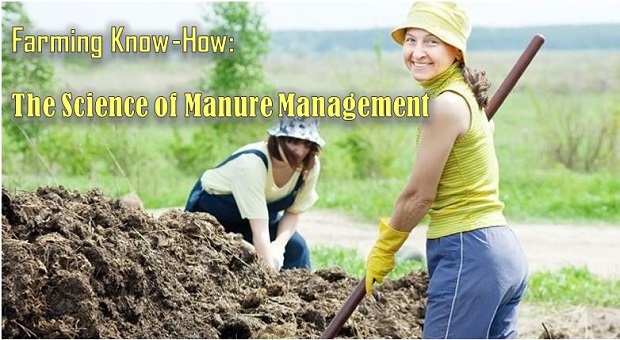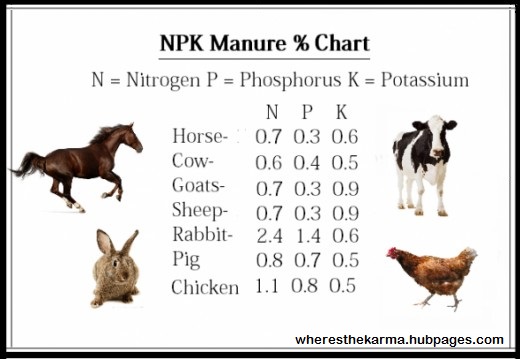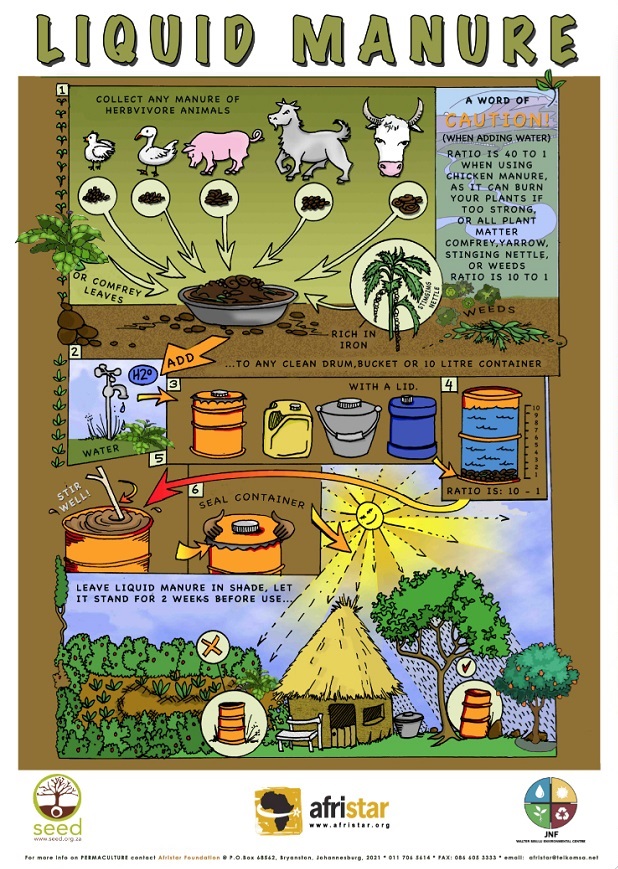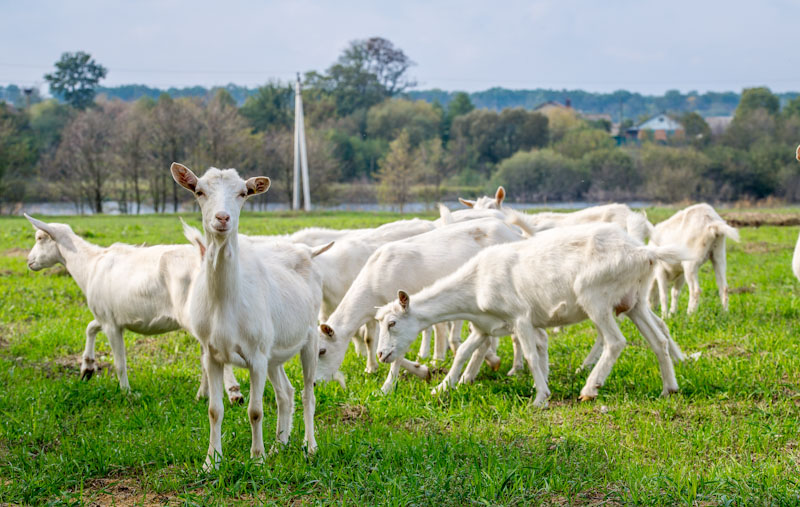Many of us already have compost piles and grow at least some of our own food but when SHTF, we’re likely going to have to step it up a bit.
In that case, although manure is an excellent way to fertilize your garden, there are some manure management rules for your survival farm that you need to follow in order to ensure success and safety.
All Manure Is Not the Same
Rule number one, so keep it in mind. Typically, the rule is to compost manure that is from a vegetarian animal. Manure from meat-eating animals is much more prone to contain harmful parasites and bacteria such as tapeworms, roundworms, pinworms and e-Coli that can cause serious illness or even death.
This applies especially to cat, dog and pig manure, though pig manure is good in certain circumstances, especially if it comes from your own disease-free animals.
Cat feces can carry toxoplasmosis eggs, which can cause disease in both humans and other animals. Roundworms found in dog (and cat) poop can cause several different conditions that can lead to blindness and liver damage.
Pigs can carry E. coli and salmonella as well as parasites such as roundworms. These are just top diseases these animals can carry and they are difficult to kill even in a compost pile.
Humanure is making a huge splash (pardon the pun) in the world of survival farming but you have to treat it very carefully if you’re going to use it for fertilizer.
You Must Compost Manure First
Regardless of what type of manure you use, you absolutely have to compost it before you use it. There are a few reasons for this. First and foremost, even manure from herbivores can contain pathogens and heating the manure in a compost pile for an extended period of time kills those pathogens.
Manure contains seeds too, so unless you want to be growing weeds in your garden, you need to compost so the heat in the pile can kill the seeds. On the same note, the heat in the compost pile kills fly and mosquito eggs and larvae so you reduce the chance of disease as well as the annoyance of the buzzing, biting pests.
Finally, tossing fresh manure on your garden will burn your plant roots and leaves. The manure is too nitrogen-rich to use in a raw state until you compost it and allow it to stabilize. Raw manure also may contain pathogens that are destroyed during the composting process.
Why Add Manure to Your Compost Pile?
Manure is an excellent additive for your compost pile for several reasons. If you have sandy soil, composted manure will help it retain moisture. If you have dense soil, manure compost will help break it up and help keep it aerated. In any soil, it increases carbon levels, which helps produce energy that makes nutrients available to plants.
Manure also helps reduce runoff and assists in the prevention of nitrate-leaching from the soil. Finally, manure is a slow-release fertilizer which means that it will continue to provide nutrients to your plants over a long period of time.
How Long Should You Compost?
Composting can be a bit tricky until you get the hang of it but it’s really pretty simple after that. The key to successful composting is to use a good mix of brown and green material along with some water. You also want to heap it high enough to build the heat necessary to break down the organic material and kill seeds and pathogens.
Make sure that your pile is at least 200 feet from surface water or private wells and 500 feet from public wells. You want to keep it well away from the barn and houses in order to avoid exposure to the smell and the methane as well as the flies and other insects.
Ideally, your compost pile should be at least 3-5 feet wide and 4-6 feet tall and the temperature should be above 50 degrees Fahrenheit. You need to turn it about once a week so that it decomposes evenly. Use equal amounts of wet and dry ingredients (manure, food scraps, wood chips, grass clippings, etc.).
Your compost pile should be slightly wet so if it dries out, spray a bit of water over it. Don’t get it too wet, though. You should be able to squeeze a couple drops of water out of it, but it shouldn’t be dripping.
The temperature inside your pile needs to remain between 130-150 degrees Fahrenheit for at least 21 days in order to kill all the nasties that may be in there.
Now let’s talk about the special needs of the top manures used for composting: cow, horse and chicken poop is the most popular, but sheep, goat and rabbit poop have definite benefits, too.
Composting…
… Cow Manure
Cow manure is extremely dense and needs to be composted with lighter materials such as straw or hay along with other organic materials such as veggie scraps and egg shells so that air can get in. The pile also needs turned regularly so that adequate air reaches the center. Cow manure is lower in nitrogen than many other types of manure so if you need to boost your nitrogen content, you may want to combine other higher-nitrogen manures or organics.
… Horse Manure
Horse manure is a bit different from cow manure in that you don’t necessarily need to add other ingredients other than just what you pick out of the stalls. There will automatically be some hay, straw or shavings in there and horse poop isn’t particularly dense so air can easily get into the pile.
If you build a pile of just your manure and shavings, and keep it a bit damp, it will compost well in about 2-3 months. You need to turn it and if you cover it with a tarp, that will help hold in the heat and speed up the compost process. When it’s done, it will look like dirt and won’t smell like manure anymore.
… Chicken Manure
Chicken poop is exceptionally high in nitrogen which makes it great for your plants. Like horse manure, you don’t have to add much to it. Just the manure and the bedding is enough to make beautiful compost. Put it in your compost bin or make a big pile, wet it down, then turn it every few weeks to get air to it.
Chicken manure takes a bit longer to compost: 6-9 months. If you’re not sure how well it’s composted, or if it’s been cold, you can let it go for 12 months. Work the compost into your garden soil.
… Sheep, Goat and Rabbit Manure
All three of these manures are high in nutrients and, due to their dry, pelleted nature, are great to add to your regular compost pile because they allow airflow. Simply mix them into your regular compost pile like you do everything else. Keep your compost pile damp and turn it frequently. Your flowers and vegetables will love you!
Different manures bring different features to the table but nearly all of them make great composts. The nutrients that manure adds to your soil will have your flowers blooming and your vegetables growing like crazy. Now that you know the manure management rules for your survival farm, happy composting!
This article has been written by Theresa Crouse for Survivopedia.












Pingback:Farming Know-How: The Science Of Manure Management | Survivalist Basics | Be Prepared For Anything! | November 10, 2014
|
Pingback:12 Must Know Before Expanding Your Livestock | Prepper's Survival Homestead | February 26, 2016
|
Pingback:Survival Gardening: How To Naturally Improve Your Soil | | disasterdefense.us | May 12, 2016
|
Pingback:Survival Gardening: How To Naturally Improve Your Soil - Prepper Dome | June 9, 2016
|
Pingback:How to Make And Use Liquid Manure Compost | Survivopedia | July 27, 2016
|